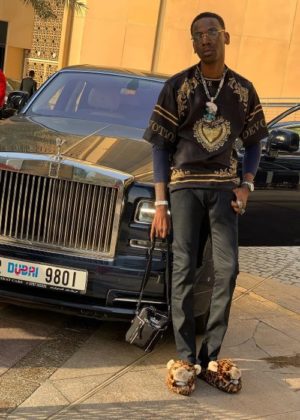Can a single individual truly transform an entire community? When we look at the life and work of Jane Goodall, the answer becomes resoundingly clear: yes. Her groundbreaking research on primates has not only reshaped our understanding of chimpanzees but also inspired countless individuals worldwide to take action for conservation. This article delves into her remarkable journey, exploring how one woman's passion and perseverance created lasting change.
Jane Goodall’s story begins in London, England, where she was born on April 3, 1934. From an early age, she exhibited an insatiable curiosity about animals and nature. Unlike many children who might have been content playing with dolls or toys, young Jane spent hours observing insects and birds in her backyard. Her mother nurtured this fascination by gifting her a stuffed chimpanzee named Jubilee when she was just over a year old—a toy that would become a lifelong companion and symbol of her destiny. By the time she reached adulthood, Jane had already set her sights on studying wildlife in Africa, despite facing numerous obstacles such as financial constraints and societal expectations for women during that era.
| Bio Data & Personal Information |
|---|
| Name: Dr. Jane Goodall |
| Date of Birth: April 3, 1934 |
| Place of Birth: London, England |
| Education: PhD in Ethology from Cambridge University (1965) |
| Spouse: Hugo van Lawick (deceased), Derek Bryceson (deceased) |
| Children: One son, Hugo Eric Louis Grub van Lawick |
| Career Highlights: |
| - Pioneering long-term study of wild chimpanzees at Gombe Stream National Park |
| - Founder of the Jane Goodall Institute |
| - UN Messenger of Peace since 2002 |
| Professional Recognition: |
| - Recipient of numerous awards including the Kyoto Prize, Benjamin Franklin Medal, and Dame Commander of the Order of the British Empire |
| For More Information: Visit Jane Goodall Institute |
In 1957, Jane seized an opportunity to travel to Kenya after being invited by a close family friend. There, she met renowned paleoanthropologist Louis Leakey, who recognized her potential and offered her a chance to conduct field research on chimpanzees. Without formal scientific training but armed with determination and patience, Jane embarked on what would become one of the most significant studies in modern science. In 1960, she arrived at Gombe Stream Chimpanzee Reserve in Tanzania, where she began documenting behaviors previously unknown to researchers. Over decades, her observations revealed startling insights: chimpanzees use tools, engage in complex social interactions, and even exhibit violent tendencies—all challenging earlier assumptions about their intelligence and behavior.
Goodall’s methods were unconventional yet effective. Rather than relying solely on distant observation techniques common among scientists at the time, she immersed herself in the environment, earning the trust of the chimpanzees through consistent presence and non-threatening demeanor. Naming each individual rather than assigning numbers allowed her to recognize distinct personalities within the group, further enriching her findings. Such approaches initially drew criticism from peers who questioned the objectivity of her work; however, over time, her meticulous documentation earned widespread respect and validation.
Beyond her contributions to ethology, Jane Goodall became a powerful advocate for environmental protection and animal welfare. Witnessing firsthand the destruction of habitats due to deforestation and poaching spurred her to expand her mission beyond research. In 1977, she established the Jane Goodall Institute, which promotes conservation efforts globally while supporting local communities. Additionally, she launched Roots & Shoots, a youth program encouraging young people to address issues affecting people, animals, and the environment in their own neighborhoods. Through these initiatives, millions around the world now participate actively in creating sustainable futures.
As years passed, Jane continued traveling extensively, speaking publicly about pressing ecological concerns. At nearly 90 years old, she remains indefatigable, delivering lectures, writing books, and inspiring new generations to carry forward her legacy. Her ability to connect deeply with audiences stems from both her scientific expertise and heartfelt compassion for all living beings. Whether addressing policymakers or schoolchildren, she conveys urgency alongside hope, emphasizing humanity’s responsibility to protect Earth’s biodiversity.
Throughout her career, challenges arose—from funding shortages to opposition from skeptics—but none deterred her resolve. Instead, they strengthened her commitment to advancing knowledge and fostering empathy. Today, Jane Goodall stands as a beacon of resilience and innovation, proving that dedication coupled with vision can overcome seemingly insurmountable barriers. As we reflect on her achievements, it becomes evident that her impact extends far beyond academia; she has redefined our relationship with nature itself.
The ripple effects of her endeavors continue growing exponentially. Countless researchers follow in her footsteps, employing similar methodologies to study various species across continents. Moreover, her advocacy has catalyzed policy changes aimed at safeguarding endangered populations and preserving ecosystems. Governments, corporations, and grassroots organizations alike draw inspiration from her example, striving toward greater harmony between human activity and natural resources.
Looking ahead, Jane envisions a future where humanity embraces its role as stewards of the planet. She believes education plays a pivotal role in achieving this vision, equipping individuals with awareness and skills necessary to make informed decisions. Simultaneously, she calls upon leaders worldwide to prioritize sustainability in decision-making processes, ensuring equitable access to clean water, air, and food for generations to come.
Ultimately, Jane Goodall’s life serves as testament to the power of individual agency. What started as a dream of a curious girl transformed into a global movement advocating for coexistence between humans and wildlife. Her story reminds us that no challenge is too great if approached with courage, creativity, and collaboration. As we face mounting environmental crises today, her message resonates more strongly than ever before—offering guidance and motivation to those willing to heed its call.

